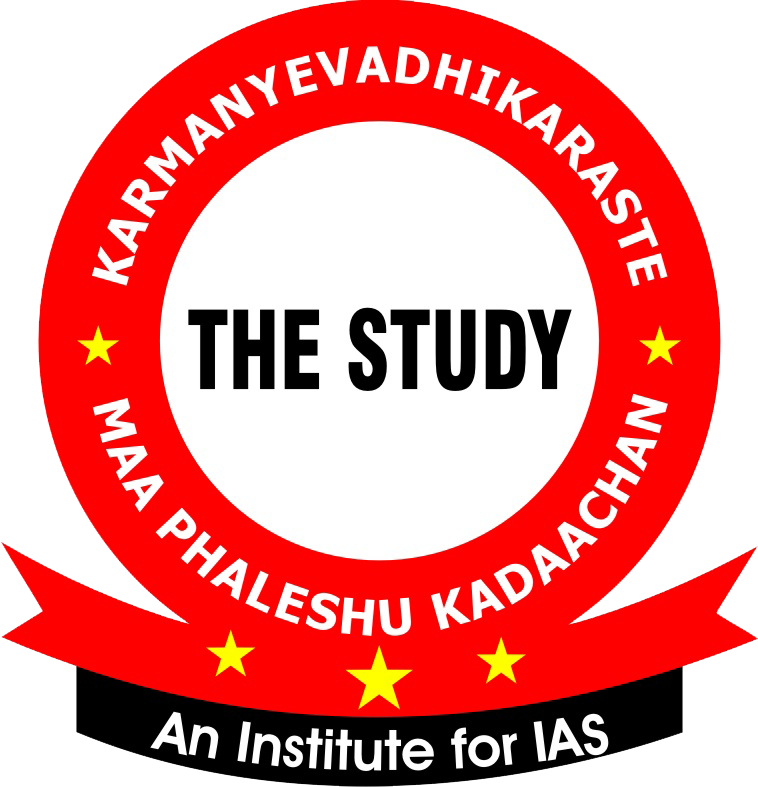June 20, 2023
W20 (Women-20), Sovereign Gold Bond Scheme 2023-24, Transgenic crops in India
W20 (Women-20)
Why in News?
- The third and final summit of the W20 group was held in Mamallapuram, Tamil Nadu.
- The W20 engagement held its first meeting in Aurangabad and the second in Jaipur.
What is W20 (Women 20)?
- The W20 group was established in 2015 during Turkey's presidency of the G20, with a primary focus on promoting gender equity.
Objective
- Incorporating gender perspectives into G20 dialogues and advocating for gender equality and the economic empowerment of women.
- It was founded on the idea that domestic initiatives needed to be incorporated into an international strategy to see any appreciable changes, as progress towards gender equality had been too slow and peripheral.
- The W20 consists of approximately 100 delegates from 19 countries and the European Union. These representatives engage in collaborative and intensive efforts to formulate policies, recommendations, and communiques through the drafting of five task forces.
About the W20, 2023
- W20, 2023 focuses on eliminating obstacles to women-led development and calls for action to ensure an enabling environment and ecosystem for women.
- The objective of the W20 in 2023 is to ensure the continuity of the W20 agenda from the previous presidency, while simultaneously establishing a more robust global and national network for the W20.
- It focused on the theme of "Women-Led Development: Transform, Thrive, and Transcend.".
India’s W20 agenda focuses on five key priorities
- Women’s Entrepreneurship, Grassroots Women's Leadership, Bridging the Gender Digital Divide, Education and Skill Development, and Climate Change.
- India is undergoing a significant shift towards transitioning from women development to women-led development, where women are recognized as equal partners in the sustainable development of the country. India is committed to creating a society where women are respected and valued, and where they can live with dignity and contribute as equal partners.
*****
Sovereign Gold Bond Scheme 2023-24
Why in News?
- Recently, the Government of India, in consultation with the Reserve Bank of India, has decided to issue two tranches of sovereign gold bonds (SGBs).
About Sovereign Gold Bond (SGB)
- It is a modified form of the Gold Deposit Scheme (GDS) of 1999. The Sovereign Gold Bond, launched by the government in 2015, serves as a substitute for holding physical gold.
- The primary motivation behind this initiative is the increasing import of gold, as a significant amount of physical gold in the form of bars and coins is being held as savings by Indian households.
- The objective of the Sovereign Gold Bond scheme is to convert existing physical gold into financial savings by offering gold bonds. These bonds provide investors with a fixed interest rate of 2.50% per annum, payable semi-annually based on their initial investment value.
- The Gold Bonds have tenure of 8 years, with the option for premature cancellation after 5 years on the interest payment dates.
- The Gold Bonds can be sold through various channels, including banks, the Stock Holding Corporation of India Limited (SHCIL), designated post offices, and recognized stock exchanges such as the National Stock Exchange of India Limited and the Bombay Stock Exchange Limited.
- Under this scheme, the minimum permissible investment limit is set at one gram of gold. However, there are maximum limits per financial year: 4 kg for individuals, 4 kg for HUFs (Hindu Undivided Families), and 20 kg for trusts and charitable institutions, as periodically notified by the government.
Sovereign Gold Bond 2023-24
- Currently, the government provides a rebate of ₹50 per gram and an annual interest rate of 2.5% to buyers of online payments.
- The government has decided to allow a discount of ₹50 (Rupees Fifty only) per gram from the issue price to those investors who apply online and the payment is made through digital mode. For such investors, the issue price of the Gold Bond will be ₹5,876 per gram of gold.
- Any resident of India is eligible to invest in Sovereign Gold Bonds. Even if an investor changes their residential status after purchasing the bond, they are allowed to continue holding the bond until early redemption or maturity.
*****
Transgenic crops in India
Why in News?
The proposal to conduct tests on a new variety of transgenic cotton seed, which had received approval from the Genetic Engineering Appraisal Committee (GEAC) of the Centre, has been declined by three states: Gujarat, Maharashtra, and Telangana.
About Transgenic Cotton Seed
- The cotton seed has been developed by Hyderabad-based Bio-seed Research India.
- The seed contains a gene called Cry2Ai, which is intended to make cotton resistant to the pink bollworm, a major pest.
- The first generation of this cotton was specifically developed to target the American bollworm.
GEAC recommendation
- The Cry2Ai seed has passed preliminary, confined trials and was recommended by the GEAC to be tested in farmer’s fields at Telangana, Maharashtra, Gujarat and Haryana.
- Agriculture being a State subject, companies interested in testing their seeds need approvals from the States for conducting such tests.
- GEAC gave approval only for Haryana for such tests.
About genetically modified crops
- Genetically modified crops are crops whose genetic material (DNA) has been altered through genetic modification, resulting in changes to their genetic structure.
- Their genetic material is prepared by genetic engineering.
Advantages
- Genetic modification can enhance crop production and make crops more resilient to climate challenges by optimizing the presence of essential elements.
- It is beneficial in controlling crop diseases.
- Genetically modified food (GM food) can be engineered to contain higher levels of minerals and vitamins than conventionally grown food. This can be beneficial for human health.
Disadvantages
- Genetically modified crops often lead to the displacement of native plants and animals.
- The consumption of genetically modified crops may have unknown health effects on both humans and animals.
- Resistance: Pests and weeds may develop resistance to genetically modified crops, which will require more pesticides and herbicides to control them.
- In this, the cross-pollination method can potentially pose risks to new species within the environment.
- The technology is carcinogenic which is a lethal technology which kill soil microbes, pollinators, almost all medicinal herbs and adversely affects crop diversity.
Status of Transgenic Crops in India
- In India, cotton is the only commercially cultivated transgenic crop.
- GEAC recently granted approval to Genetically Modified Mustard (DMH-11) in India, but it has encountered strong opposition.
*****
India-UP Defense Corridor
Why in News?
- According to the Union Defense Minister, BrahMos drones will be manufactured in the India-UP defense corridor.
Uttar Pradesh Defense Corridor
- The Uttar Pradesh Defence Industrial Corridor (UPDIC) is an aspirational project that intends to reduce the dependence of the Indian aerospace and the defence sectors on foreign suppliers.
- This was announced by the Prime Minister during the inauguration of the UP Investors Summit in Lucknow in the year 2018.
- It will have 6 nodes- Aligarh, Agra, Kanpur, Chitrakoot, Jhansi and Lucknow.
- It aims to establish the state as one of the largest and advanced defense manufacturing hubs and bring it on the world map.
- Union Defense Minister recently announced that the corridor will not only produce spare parts, nuts and bolts but also manufacture and assemble drones/unmanned aerial vehicles, electronic warfare, aircraft and BrahMos missiles.
- Like Uttar Pradesh, an "enabling" environment has been created for defense manufacturing in Tamil Nadu's defense corridors.
Brahmos missile
- BrahMos is a short-range ramjet, supersonic cruise missile.
- It can be launched from various platforms including submarines, ships, aircraft, and land-based systems.
- This missile is a jointly developed by Russia's NPO Mashinostroeyenia and India's Defense Research and Development Organization (DRDO).
- The missile is based on the technology of Russia's P-800 Oniks cruise missile.
Why in News?
- A recent study in the Nature journal says that the loss of Arctic sea ice is inevitable in the decades ahead, even if the world somehow gets its act together and sharply reduces carbon emissions.
Importance of Arctic sea ice
- The massive sheets of ice that pad the Arctic region play a major role in influencing global climate and the rise and fall in Arctic sea temperatures.
- During winter, the sea ice envelops most of the Arctic Ocean and in summer, a portion of it melts due to being exposed to longer periods of sunlight and elevated temperatures.
- The aquatic environment here is suitable for biodiversity, any kind of change in it can cause loss of life.
- According to the United States Environmental Protection Agency (EPA) - Sea ice is light-coloured and therefore reflects more sunlight back to space than liquid water, thus playing a vital role in keeping polar region cool and maintaining the earth’s energy balance.
- Sea ice also keeps the air cool by forming a barrier between the cold air above and the relatively warmer water below. As the amount of sea ice decreases, the Arctic region’s cooling effect is reduced, and this may initiate a ‘feedback loop’ whereby ocean warming caused by more absorption of solar energy leads to an even greater loss of sea ice and further warming.
- Changes in sea ice can affect biodiversity and impact mammals such as polar bears and walruses, which rely on the presence of sea ice for hunting, breeding, and migrating. The reduction in ice cover also affects the traditional subsistence hunting lifestyle of indigenous Arctic populations such as the Yup’ik (constitute the largest ethnic group in Alaska), Iñupiat, and Inuit the EPA notes.
- On the other hand, reduced ice can present “commercial and economic opportunities” with the opening up of shipping lanes and increased access to natural resources in the Arctic region.
Nature Journal study
- That the Arctic sea ice is decreasing is well-known and acknowledged in several reports of the Intergovernmental Panel on Climate Change (IPCC) and it is widely expected that the world will see its first ‘sea-ice free summer’ before 2050.
- This, however, is under the assumption that global emissions will drive temperatures to beyond 4.5°C, making the Arctic ice-free by 2081-2100.
- Carbon emissions were curbed enough to ensure that temperature-rise was restricted to say 1.5°C or 2°C, as envisaged in the Paris Agreement. But there is no way to prevent Arctic sea ice from melting in the summer, according to the journal Nature. Satellites monitoring the Arctic have shown the rate of loss to be 13% every year.
Impact
- The reduction of sea ice in the Arctic not only contributes to the warming of the region but also weakens the polar jet streams, which are air currents formed when warm and cold air meet.
- This weakening has been associated with increasing temperatures and heatwaves in Europe, as well as unexpected rainfall in northwest India. Recent circumstances indicate that an ice-free summer is becoming unavoidable.
*****

